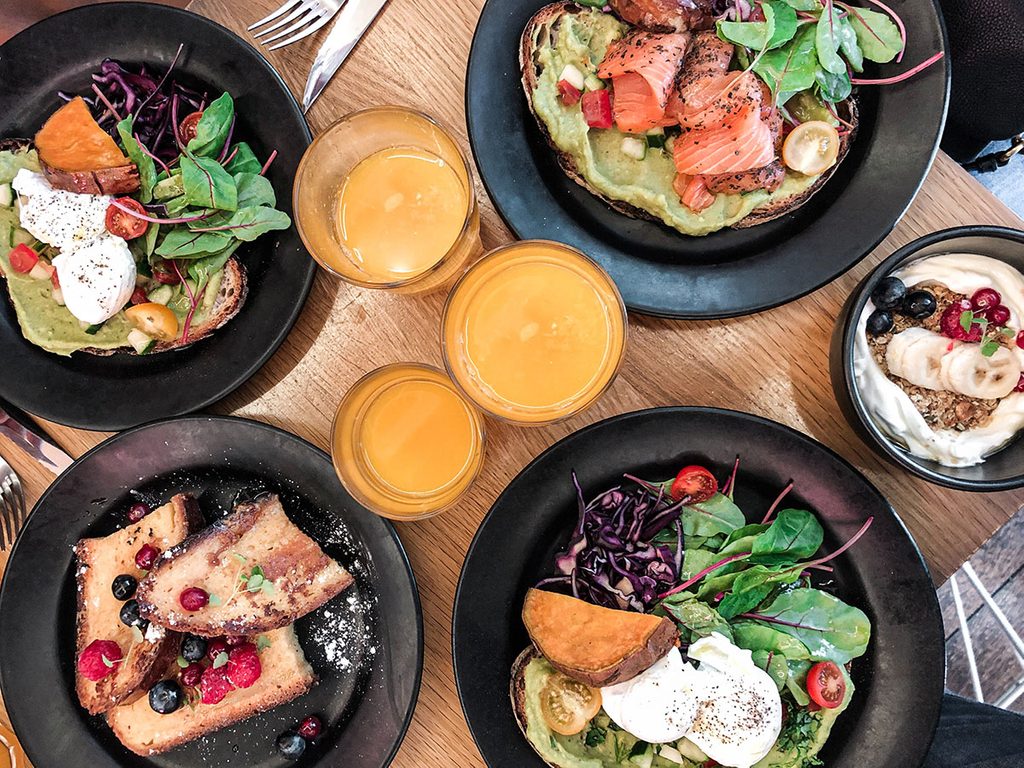How to Be Healthy Without Dieting, According to the Experts

Want to be healthier, but don’t want to commit to an involved plan? We hear you. So we reached out to two experts—registered dietitians and twin sisters Rebecca and Reisha Harper—to determine what you should focus on. Here's what they had to say.
Creating a healthy lifestyle is about making small changes in your daily life. It doesn’t have to be a huge commitment that becomes too exhausting or unrealistic to maintain, such as a strict diet or an intense workout routine.
There’s plenty of nutrition information available online. But if you don’t know whether the material is reliable, evidence-based or valid, it may cause you to procrastinate and prevent you from taking further steps to achieve your goals.
For starters, re-educate yourself about healthy eating – that is, forget “dieting.” You may lose weight on a diet, but research shows that once a diet is completed, you tend to gain back the weight lost, plus an additional five to 10 pounds. (Psst: Here’s how to make your healthy lifestyle changes stick.) Our focus is on what healthy eating really is and how to make a realistic plan to move forward. To achieve better health, you have to understand the changes needed to your daily nutrition habits and physical activity levels and then commit to making those changes in small steps.
A healthy lifestyle is all about enjoyment, flexibility, moderation and mindful eating to help you look and feel your best. Here are three tips to get started on becoming a healthier version of you.
1. One size doesn’t fit all.
You are uniquely designed. There is no “perfect” size. You have a set point, which is your natural body weight when you are eating healthy and being physically active on a daily basis, where you look and feel your best. Know your waist-to-hip ratio (WHR), as it’s a much more accurate reflection of your overall health status than a number on a scale. WHR is one of several measurements to determine if you are overweight and if that excess weight is putting your health at risk. Divide your waist circumference by your hip circumference to determine your WHR and review a WHR chart (like this one) to assess your health risk.
2. Include more plant-based foods.
Every day, you should choose to eat significantly more foods primarily from plants, such as fruits, vegetables, whole grains, avocado and olive oils, nuts, seeds, beans and legumes. This will boost your intake of essential vitamins, minerals, phytonutrients and fibre, all of which are required for optimal health. You can still include foods like dairy, fish, poultry and meat throughout the week, but focus on including more plant-based foods in your meals.
3. Make gut health a priority.
Your gut is your “second brain.” When it comes to gut health, the key message is “You are what you absorb.” Gut health is of utmost importance in becoming the healthiest version of you. Eighty percent of your immune system is found in your digestive tract. Most importantly, inflammation is directly related to your immune response. Chronic inflammation results in many common diseases. To help improve your gut microflora, take a high-quality probiotic every day, increase your daily intake of prebiotic fibre (such as berries, citrus, bananas, apples, pears, asparagus, garlic, onions, leeks, whole grains and legumes) and include fermented foods (such as sauerkraut, kimchi, miso, kombucha and tempeh), which are rich in living bacteria.
Rebecca and Reisha Harper of Harper Nutrition are twin sisters and registered dietitians with a special focus on nutrition for health, beauty and aging well. Follow them on Instagram @harpernutrition_twins.
Next, check out which foods the Harper twins recommend for glowing skin and shiny hair.




